Delivering the 18 Weeks Referral to Treatment Standard Output Report
Delivering the 18 Weeks Referral to Treatment Standard Output Report
Delivering the 18 Weeks Referral to Treatment Standard Output Report
You also want an ePaper? Increase the reach of your titles
YUMPU automatically turns print PDFs into web optimized ePapers that Google loves.
<strong>Referral</strong> Management Pathways for Orthodontics and Oral SurgeryThe Task and Finish Group commissioned two focused referral managementpathway groups for Orthodontics and Oral Surgery, <strong>to</strong> develop and agree astreamlined pathway approach. As well as reducing unnecessary variation intreatment plans for <strong>the</strong> same condition, <strong>the</strong> pathways aim <strong>to</strong> facilitate more equitablereferral patterns and common thresholds for referrals <strong>to</strong> secondary care.Each pathway group had clinical representation. The Orthodontic pathway hadrepresentation from primary and community care GDPs, a primary care specialis<strong>to</strong>rthodontic practitioner and secondary care consultant Orthodontists. The OralSurgery pathway had clinical representation from primary care specialistpractitioners, secondary care oral surgeons and secondary care oral and maxillofacialsurgeons. Membership of <strong>the</strong>se groups can be found in Appendix three andfour.These national pathways represent a clinical consensus across NHSScotland. Theyhave been endorsed by <strong>the</strong> professional bodies: The Scottish OrthodonticConsultants’ Group and <strong>the</strong> Scottish Oral and Maxillo-Facial Society amongst o<strong>the</strong>rstakeholders. As a result, <strong>the</strong>re is already sign up and expectation for <strong>the</strong>irimplementation and embedding. The pathways should be tailored <strong>to</strong> accommodatelocal provision of <strong>the</strong>se services, and although <strong>the</strong> fundamental principles mustapply, local issues should be addressed accordingly. It was also found that key <strong>to</strong><strong>the</strong> success of delivering a pathway approach is likely <strong>to</strong> be <strong>the</strong> management ofpatient expectations.Action Planning - Implementing national pathwaysNHS Boards should ensure that <strong>the</strong> national pathways for Orthodontics and OralSurgery are promoted across both primary and secondary care and that <strong>the</strong>re isadherence <strong>to</strong> <strong>the</strong> thresholds for referral indicated. The pathways are attached asappendices Five and Six and may be accessed at:http://www.<strong>18</strong>weeks.scot.nhs.uk/how-<strong>to</strong>-achieve-and-maintain-<strong>18</strong>-weeks/patient-pathways/dentalspecialties/There may be fur<strong>the</strong>r scope for education and training. Targeted continuingprofessional development may assist GDPs in confidently applying referralpathways. There could be a role for National Education Scotland (NES) <strong>to</strong> develop awider programme of education.Index of Orthodontic <strong>Treatment</strong> NeedThe Index of Orthodontic <strong>Treatment</strong> Need (IOTN) is generally regarded as a helpful<strong>to</strong>ol in prioritising patients for referral and treatment <strong>to</strong> appropriate care providers i.e.specialist practitioners in primary care and clinicians in secondary care. IOTN usesboth an aes<strong>the</strong>tic and clinical component in order <strong>to</strong> assess an IOTN score, althougha higher IOTN score is not necessarily indicative of complexity of treatment required.Dental Specialties Task & Finish Group – January 2011 28


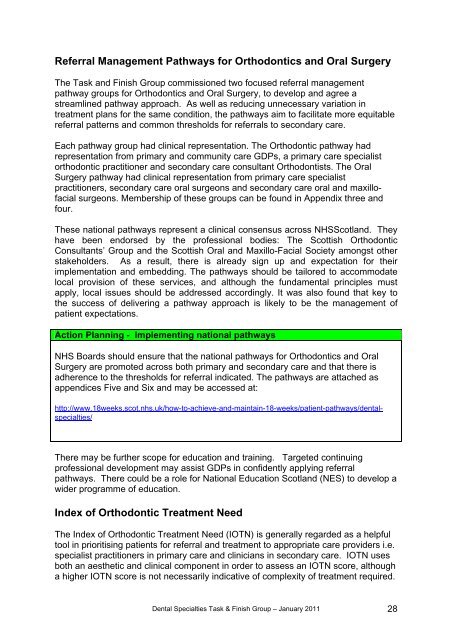
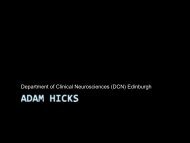
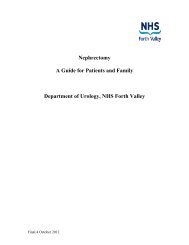
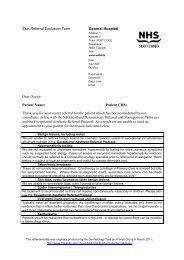
![Dr Matthew Checketts, NHS Tayside [PDF - 6Mb] - 18 Weeks](https://img.yumpu.com/49027155/1/190x143/dr-matthew-checketts-nhs-tayside-pdf-6mb-18-weeks.jpg?quality=85)
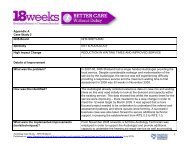
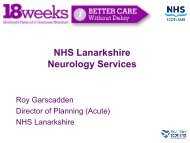
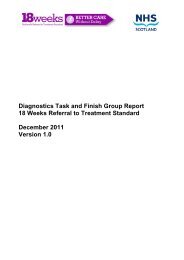

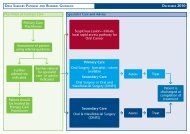


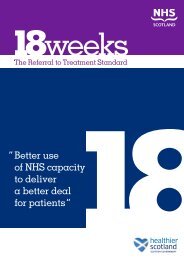
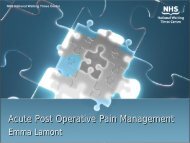
![Mark Sindall, NHS Dumfries and Galloway [PDF - 227Kb] - 18 Weeks](https://img.yumpu.com/30080335/1/190x143/mark-sindall-nhs-dumfries-and-galloway-pdf-227kb-18-weeks.jpg?quality=85)